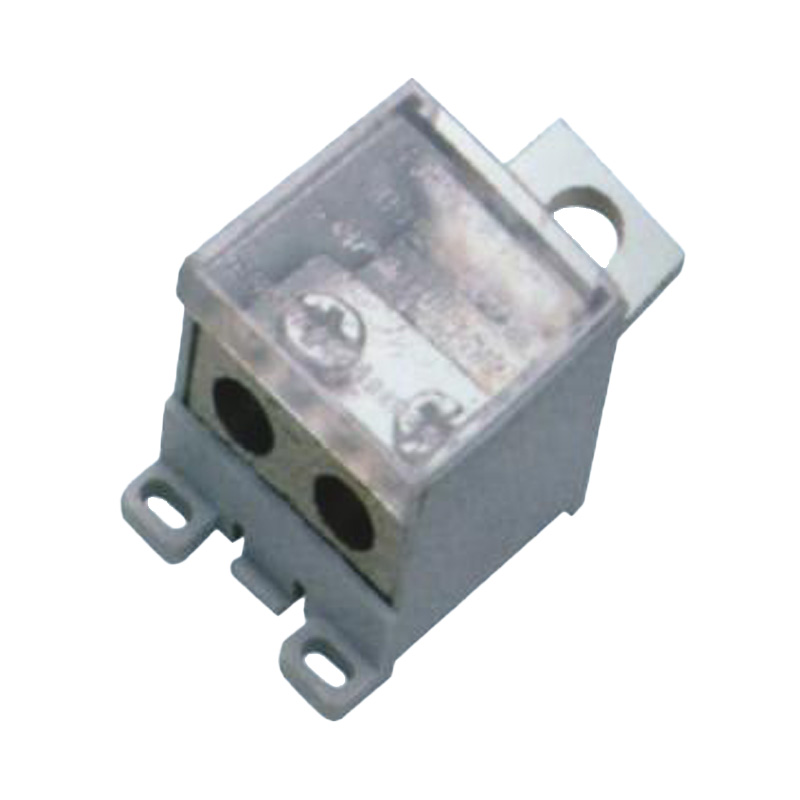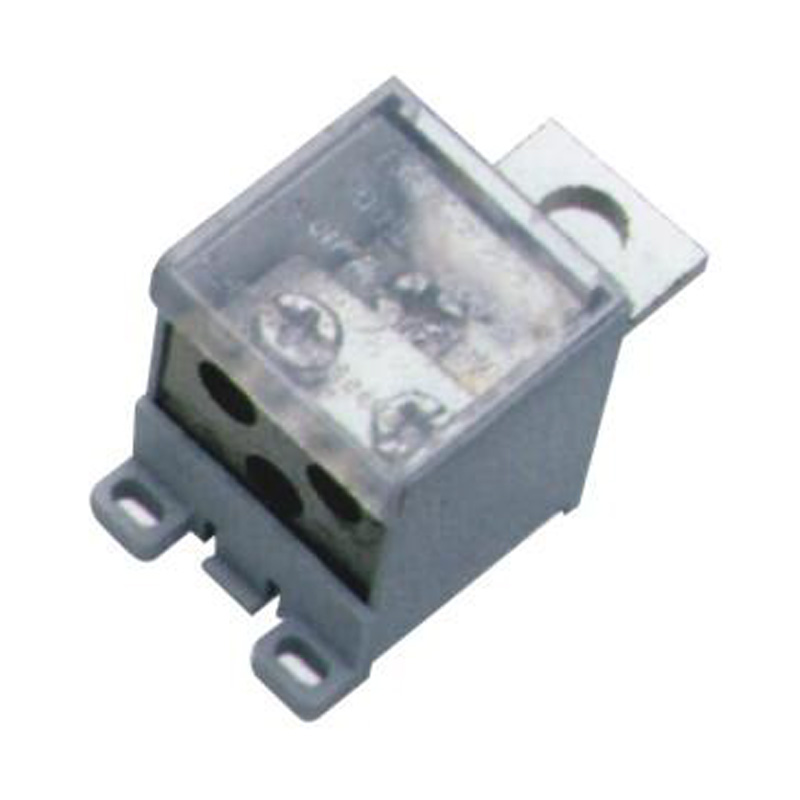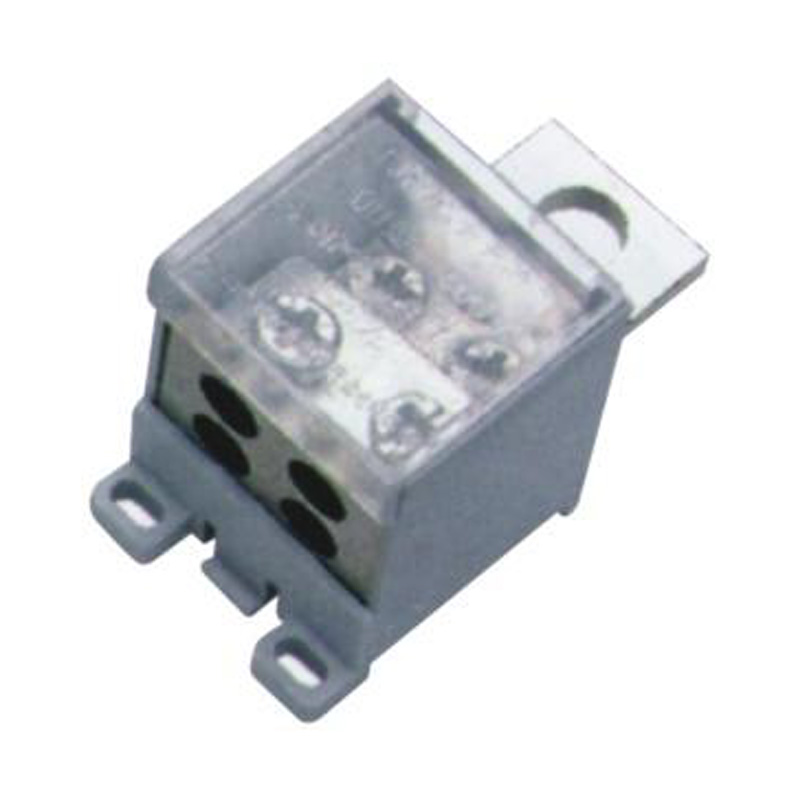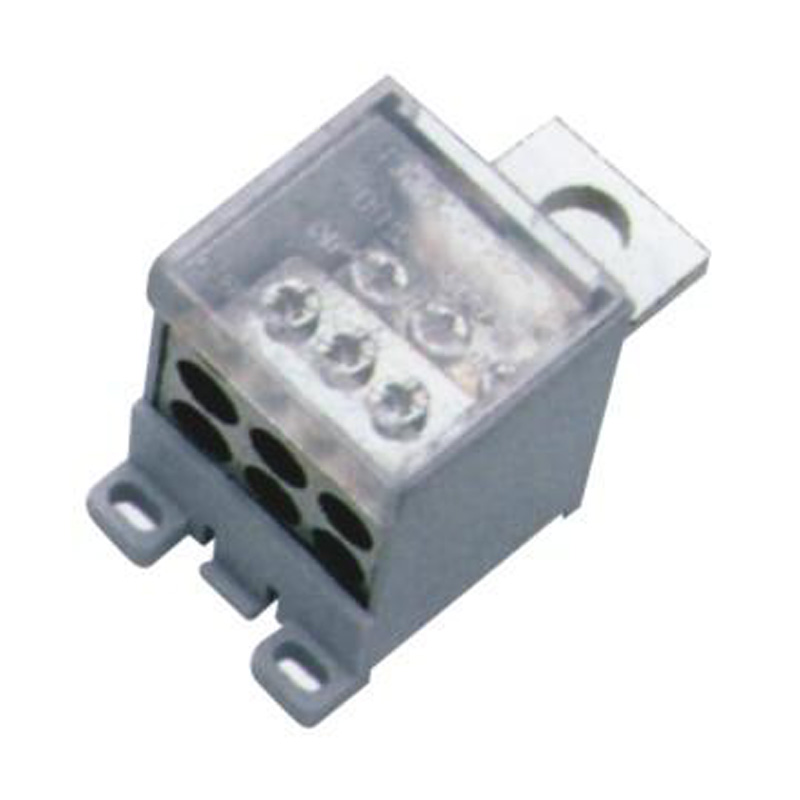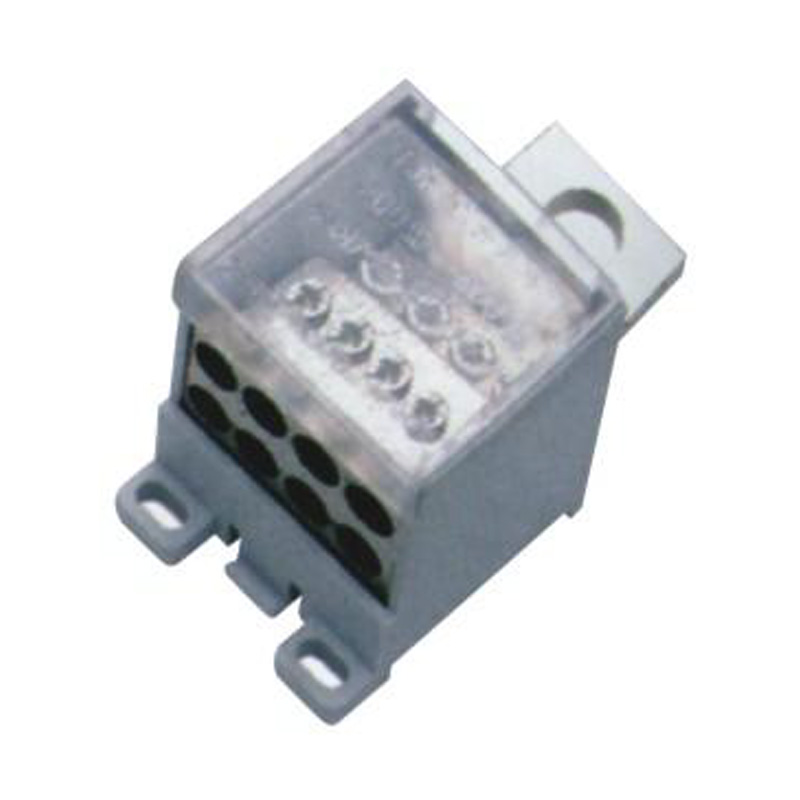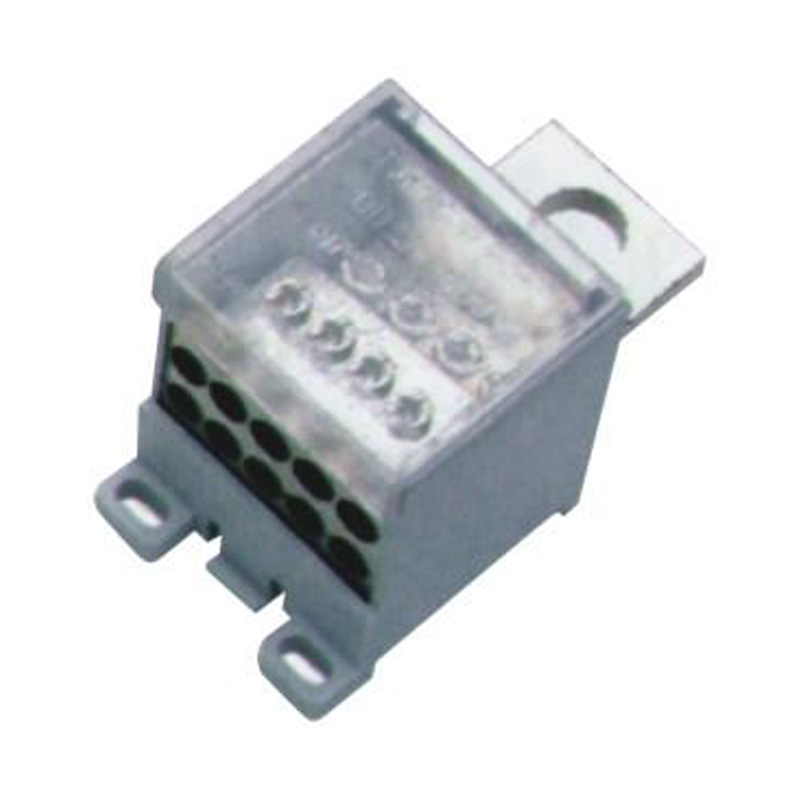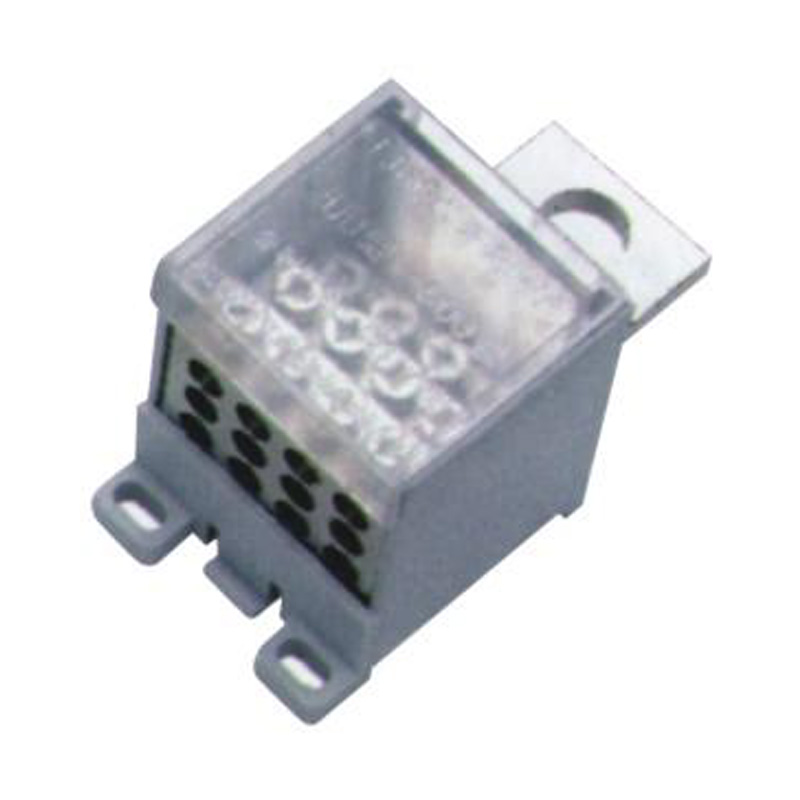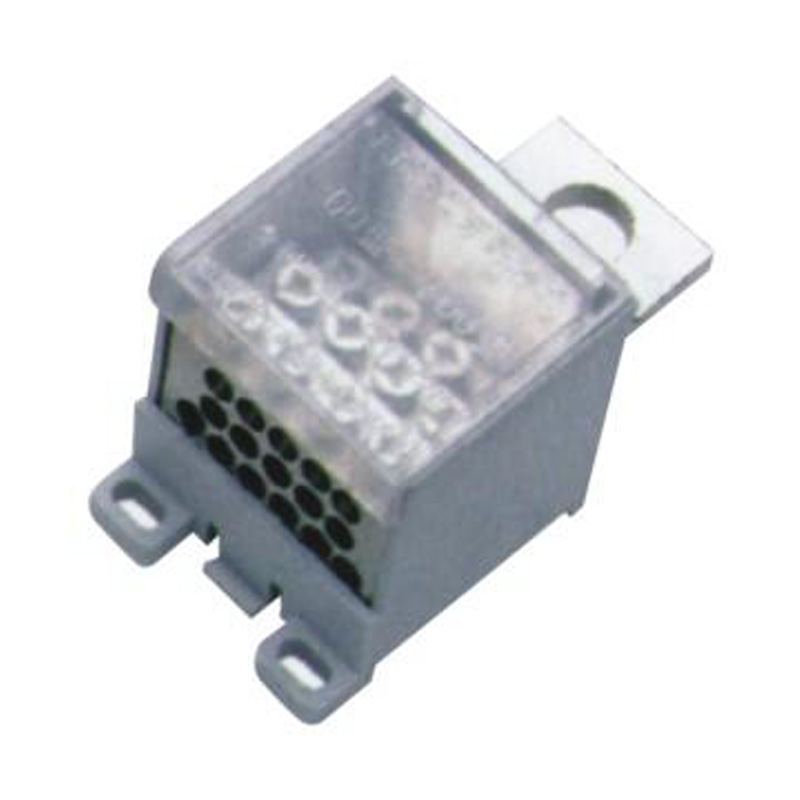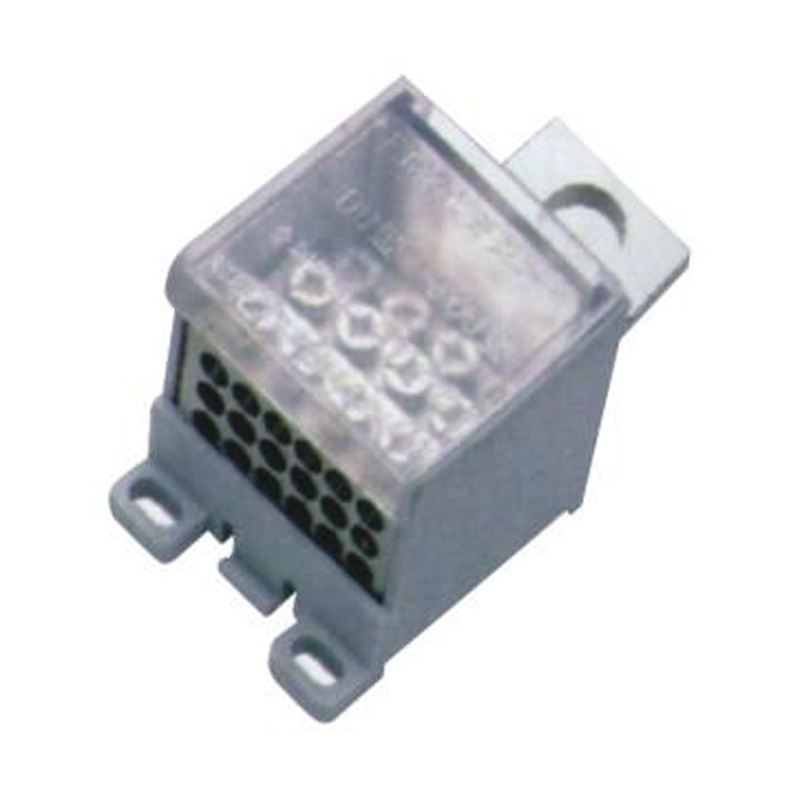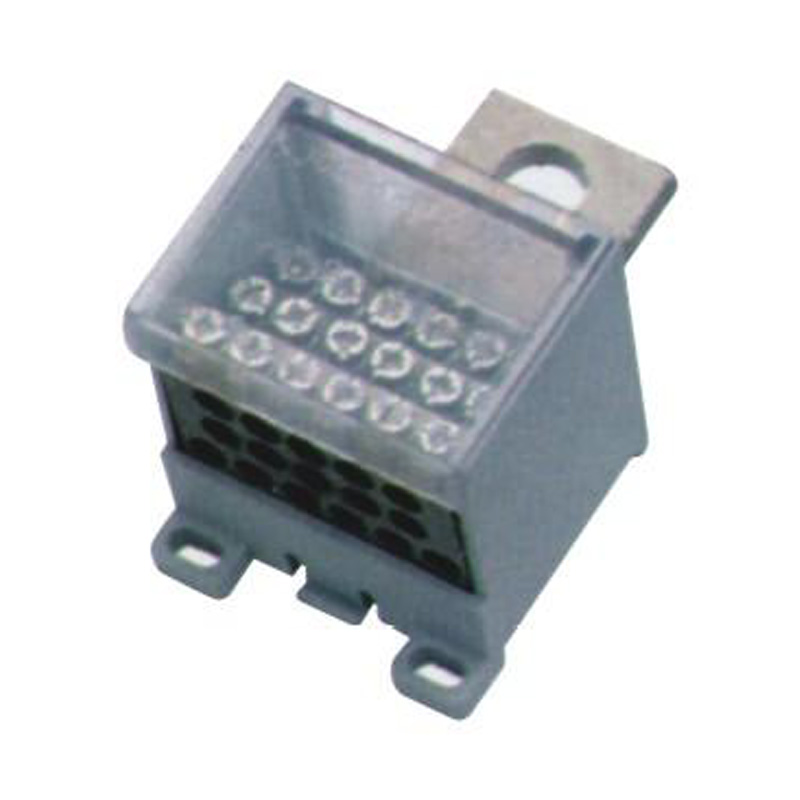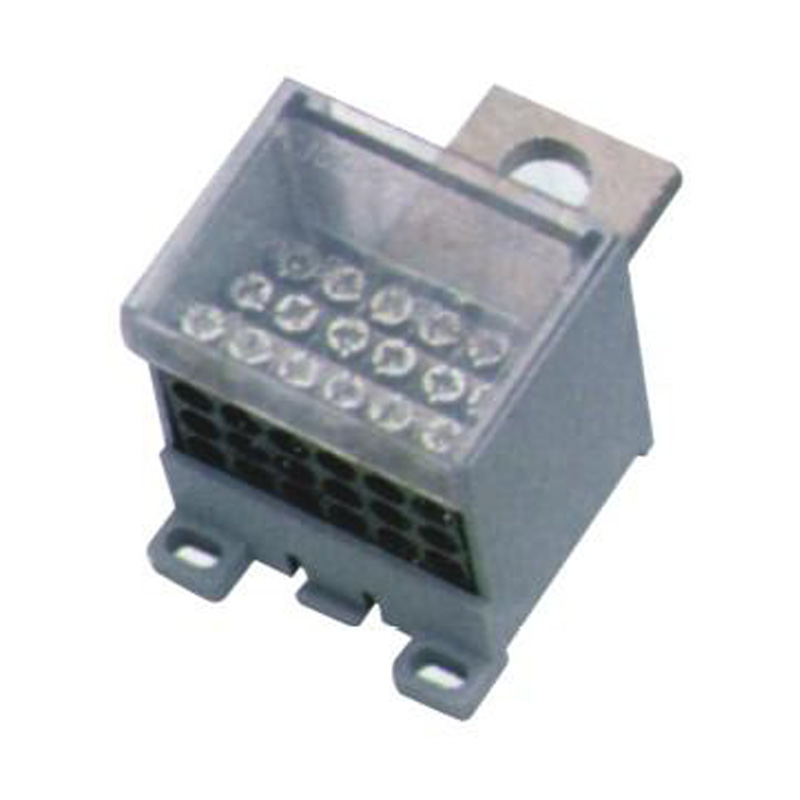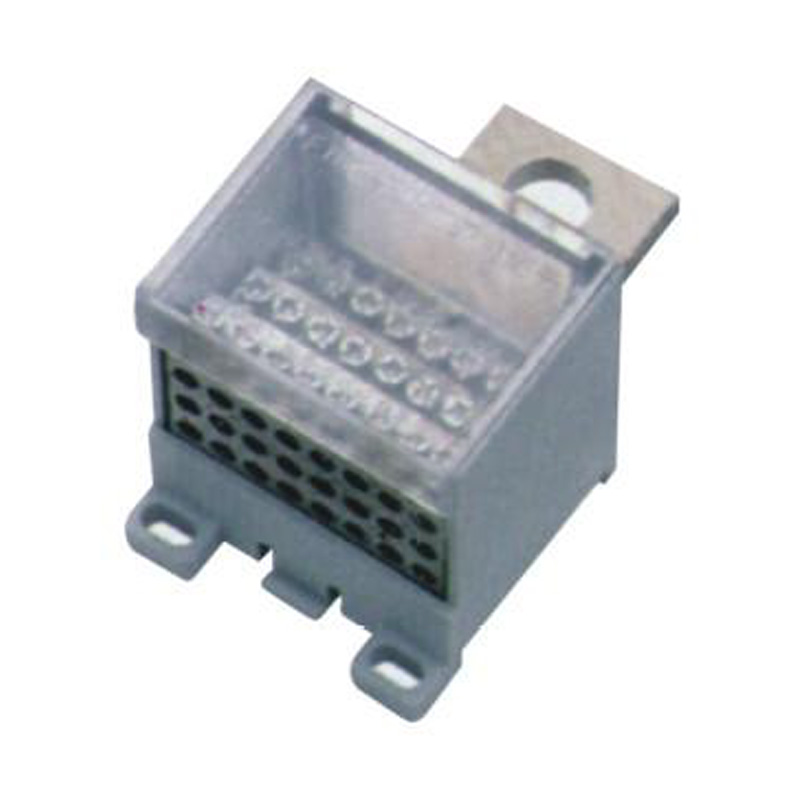In modern electrical control panels, a dual row terminal block combined with Din Rail Terminal Blocks provides an efficient soluti...
READ MOREOne Way in Switch Terminal Block Manufacturer
One-Way-In Switch Terminal Blocks are professionally used for creating secure and reliable connections in electrical systems, specifically designed to handle single-input connections with integrated switching capabilities. These terminal blocks are ideal for applications that require a straightforward, easy-to-install solution for managing electrical circuits, making them suitable for use in control panels, distribution boards, and various electrical installations where simplicity and reliability are essential.
These terminal blocks feature a compact design that allows for secure connections of conductors while providing a built-in switch mechanism. This design ensures easy management of electrical circuits, allowing users to control the flow of electricity with a single switch. The robust construction of One-Way-In Switch Terminal Blocks ensures durability and reliability, even under continuous electrical load and varying environmental conditions.
One-Way-In Switch Terminal Blocks are currently a versatile and reliable solution for managing single-input electrical connections with integrated switching. They simplify the installation process by providing a compact and secure connection point, enhance system reliability through their robust design, and ensure consistent electrical performance. Their user-friendly design makes them suitable for a wide range of residential, commercial, and industrial applications where ease of use and reliability are essential for efficient operation.
FJ6G-600/35-95/2x25 Switch Terminal Block
FJ6G-600/35-95/2x25
One-inlet,two-outlet
Inlet wire:35-95mm²,outlet wire:1.5-25mm²
Order number:150915
FJ6G-600/35-95/3x 16 Switch Terminal Block
FJ6G-600/35-95/3x16
One-inlet,three-outlet
Inlet wire:35-95mm²,outlet wire:1.5-16mm²
Order number:150916
FJ6G-600/35-95/4x16 Switch Terminal Block
FJ6G-600/35-95/6x16
One-inlet, six-outlet
Inlet wire:35-95mm²,outlet wire:1.5-16mm²
Order number:150918
FJ6G-600/35-95/6x 16 Switch Terminal Block
FJ6G-600/35-95/6 x16
One-inlet, six-outlet
Inlet wire:35-95mm²,outlet wire:1.5-16mm²
Order number:150918
FJ6G-600/35-95/8x16 Switch Terminal Block
FJ6G-600/35-95/8x16
One-inlet, eight-outlet
Inlet wire:35-95mm²,outlet wire:1.5-16mm²
Order number:150919
FJ6G-600/35-95/10x 16 Switch Terminal Block
FJ6G-600/35-95/10x16
One-inlet, ten-outlet
Inlet wire:35-95mm²,outlet wire:1.5-16mm²
Order number:150920
FJ6G-600/35-95/12x16 Switch Terminal Block
FJ6G-600/35-95/12x 16
One-inlet, twelve-outlet
Inlet wire:35-95mm²,outlet wire:1.5-16mm²
Order number:15092
FJ6G-600/35-95/16x10 Switch Terminal Block
FJ6G-600/35-95/16x10
One-inlet, sixteen-outlet
Inlet wire:35-95mm²,outlet wire:1.5-10mm²
Order number:150922
FJ6G-600/35-95/18x10 Switch Terminal Block
FJ6G-600/35-95/18x10
One-inlet, eighteen-outlet
Inlet wire:35-95mm²,outlet wire:1.5-10mm²
Ordernumber:150923
FJ6G-600/35-95/16x 16 Switch Terminal Block
FJ6G-600/35-95/16x16
One-inlet, sixteen-outlet
Inlet wire:35-95mm²,outlet wire:1.5-16mm²
Ordernumber:150924
FJ6G-600/35-95/18x 16 Switch Terminal Block
FJ6G-600/35-95/18x16
One-inlet,eighteen-outlet
Inlet wire:35-95mm²,outlet wire:1.5-16mm²
Order number:150925
FJ6G-600/35-95/24x6 Switch Terminal Block
FJ6G-600/35-95/24x6
One-inlet, twenty-four-outlet
Inlet wire:35-95mm²,outlet wire:1.5-6mm²
Ordernumber:150926
Search
Categories
-
Energy Measuring Terminal Block(314)
- Energy Measuring Joint Terminal Block(16)
- Polycarbonate Energy Measuring Terminal Block(24)
- Standard Wiring Energy Measuring Terminal Block(4)
- Transparent Shell Energy Measuring Terminal Block(6)
- Multifunctional Test Energy Measuring Terminal Block(10)
- Intelligent Safety Energy Measuring Terminal Block(6)
- Single-Phase Multi-Circuit Output Terminal Block(12)
- Self-Elevating Metering Box Terminal Block(7)
- One Household One-Meter Meter Box Dedicated Terminal Block(56)
- Three-Phase Metering Box Dedicated Terminal Block(24)
- Repeatable Grounding Line Terminal Block(20)
- Terminal Block for One-Inlet Multi-Outlet Metering Box(15)
- Closed Terminal Block(11)
- Heavy Current Terminal Block(48)
- Self-Boosting Terminal Block(5)
- Intelligent Self-Locking Terminal Block(3)
- Tool-Free Crimping Type Terminal Block(5)
- Wide Range of Wire Diameters Terminal Block(5)
- Combined Type Energy Measuring Terminal Block(37)
-
Switch Terminal Block(55)
- Pin-Type Incoming Line Switch Terminal Block(4)
- Multi-Way Connection Switch Terminal Block(4)
- Plug-pin Switch Terminal Block(7)
- Combined Type Switch Terminal Block(7)
- High Contact Cross Section Switch Terminal Block(7)
- Wide Range Switch Terminal Block(11)
- One Way in Switch Terminal Block(12)
- Equipped with Circuit Breaker Switch Terminal(3)
-
Heavy-current Terminal Block(631)
- Modular Building Block Terminal Block(156)
- Spherical Non-Destructive Crimp Terminal(120)
- Dual-Mode Connection Electrical Terminal(90)
- Anti-Electricity-Theft Terminal Block(74)
- Convenient Connection Terminal Block(12)
- High-Contact Section Terminal Block(12)
- Wide Range of Wire Diameters Neutral Line Terminal(9)
- Heavy-Current Neutral Line Terminal(9)
- Upper and Lower Rows of Neutral Terminal(2)
- Independent Neutral Line Terminal(7)
- Nose-Type Neutral Line Terminal(7)
- Rail Type Neutral Line Terminal(9)
- Fixed Neutral Line Terminal(12)
- Double Rail Assembly Electrical Terminal(19)
- Blue Jack-Up Terminal(6)
- Black Base Copper Bar Terminal(5)
- Compact Terminal Block(16)
- Precision Terminal Block(23)
- U-Shaped Harpoon Terminal(2)
- Grounding Metering Box Terminal Block(12)
- High-Performance Terminal Block(19)
- Multifunctional Terminal Block(10)
- Din Rail Terminal Block(76)
- Watt-hour Meter Connector(49)
-
Energy Meter Accessories(116)
-
-
As electrical systems become more advanced, the demand for more reliable, durable, and efficient components grows. Connectors Term...
READ MORE -
Ensuring that connector terminals are properly installed is critical for the long-term performance and reliability of any electric...
READ MORE -
Selecting the correct terminal is essential for the stability and efficiency of any electrical system. For professionals in the el...
READ MORE -
Electrical systems rely on high-quality components for safe, efficient, and reliable operation. One such crucial element is the co...
READ MORE -
Using the right junction box and circuit breaker block junction box can bring more than safety — it can significantly improve inst...
READ MORE
What Are The Safety Precautions For Using a One-Way In Switch Terminal Block?
One-Way In Switch Terminal Blocks are designed for simplicity, but that doesn't mean you can skip on safety. Their design, where the wire is inserted from one direction and clamped, requires specific attention to detail to prevent failures. Here are the critical precautions to follow.
Ensure Proper Wire Insertion and Secure Clamping.
The entire safety and functionality of a one-way terminal block depends on a solid connection. You must use the correct wire size and type as specified by the manufacturer. Using a wire that is too small can a loose connection; one that is too large can damage the clamping mechanism or prevent full insertion.
Before insertion, strip the wire to the exact recommended length. Too much bare wire exposes live metal, creating a shock or short-circuit hazard. Too little means the clamp is gripping the insulation, not the conductor, a dangerous high-resistance connection that can overheat. After inserting the wire, you must verify it is secure. Tug on it gently to ensure it is held firmly by the clamp. A loose wire can arc, overheat, and potentially cause a fire.
De-Energize the Circuit Before Any Work and Verify.
This is the golden rule of electrical work, but it's so vital it bears repeating. Never assume a circuit is dead. Before wiring, inspecting, or removing a wire from a switch terminal block, you must completely isolate the circuit from all power sources. This includes locking out and tagging out the main power supply to prevent accidental re-energization.
After cutting the power, always use a properly functioning voltage tester or multimeter to confirm that there is zero voltage present at the terminal block itself. Check between all relevant poles and ground. Relying on a switch alone to isolate power is not safe, as the switch mechanism could be faulty. This simple step of verification is your primary defense against severe electrical shock.
Respect the Switching Mechanism's Limits.
The switch on these blocks is a mechanical device with defined limits. Understand its electrical rating—both the voltage and, more importantly, the current (amperage) it can safely break. These are often different from the terminal block's continuous current rating. Using the switch to interrupt a load higher than its rating will cause internal arcing, which quickly damages the contacts. Over time, this carbon buildup increases resistance and heat, switch failure. For higher-power circuits, always use the switch to control a relay or contactor that is rated for the load, not the load itself.
What Are The Maintenance Techniques For Heavy Duty Switch Terminal Blocks?
Heavy Duty Switch Terminal Blocks are built to handle higher currents and harsher environments, but their durability doesn't make them maintenance-free. Proactive and regular care is key to ensuring their long-term reliability and preventing unexpected downtime.
Regular inspection is the cornerstone of good maintenance. Schedule visual checks at least annually, or more frequently in demanding environments like those with high vibration, dust, or moisture. Look for obvious signs of stress: discoloration or melting of the plastic housing, which indicates past overheating. Check for cracks in the body or signs of corrosion on the metal components, especially in humid conditions. These are clear indicators that a terminal block may need replacement.
The critical part of maintenance is checking and retightening the terminal connections. Over time, thermal cycling (the repeated expansion and contraction of materials as they heat up and cool down) can cause terminal screws to loosen. A loose connection increases electrical resistance, which in turn generates more heat, creating a dangerous cycle that can failure. During maintenance, power down the system completely and use the correct screwdriver to check the tightness of each clamp screw. Do not over-tighten, as this can strip the threads or damage the wire. Follow the manufacturer's recommended torque values if provided.
Pay specific attention to the switch mechanism itself. Over thousands of cycles, the internal metal contacts can wear down or become pitted from arcing. If the switch feels loose, gritty, or fails to make a crisp connection, it's likely worn out. For blocks with removable actuators or entire switch modules, these parts can often be replaced without changing the entire terminal block. Use a multimeter to test the switch's functionality—it should show a near-zero ohm reading when closed and "open line" when open. Any significant resistance when closed means the contacts are degraded and should be addressed. Keeping the switch clean and free of conductive dust is also vital for preventing accidental short circuits.



 English
English Español
Español عربى
عربى